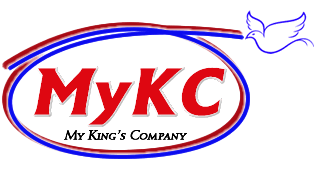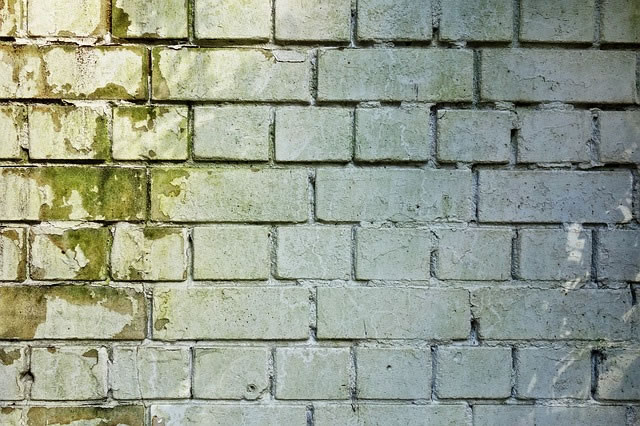By Mary Marlowe Leverette
Mold spores are everywhere around us in every type of climate. Mold is fungi and some types are extremely beneficial to mankind (think of penicillin), while others can be quite dangerous to crops, respiratory systems, and the integrity of structures.
Dangerous Mold vs. Mildew
The most common type of mold found in homes is mildew. Mildew is a surface mold that grows in warm, damp places like your bathroom and on fabrics and books stored in damp basements. Mildew begins as a gray or white powdery colony. It will turn black or brown if not removed promptly and often looks like soil accumulation. To test if the surface is covered with mildew or just dirt, dab the stain with a cotton swab dipped in household chlorine bleach. If the stain lightens or disappears after two or three minutes, it’s mildew. If not, it’s probably just dirt.
If you detect a musty odor anywhere in your home, then you have a high concentration of mold. It can be coming from a hamper filled with damp towels, from a damp crawlspace under your home, or carpets that have mold growing in the padding. It’s definitely time to take action to get rid of the problem.
Now you know that all mildew is mold but not all molds are mildew. Mildew can discolor and slowly harm surfaces but there are much more dangerous molds that can damage the structure of your home. If you see a black or green mold that is fuzzy or slimy and the drywall or wood underneath is soft or crumbles, there is irreversible rot and the mold and the damaged surfaces must be removed immediately.
Hiring Professionals
If mildew infestation is caught early, you can easily handle it with household cleaners.
Warning
For extensive mold problems, consider hiring a professional. Some molds are highly toxic and even less dangerous molds can cause problems for anyone with mold allergies or compromised respiratory systems.
The Spruce
The rule of thumb is if the mold covers 10 or more square feet, call in a professional. Removing large mold colonies requires exposure to heavy-duty chemicals and proper disposal of infested building materials. Local public health departments can offer advice on mold testing and refer you to an expert mold remover.
Products That Kill Mold
Chlorine bleach: Sodium hypochlorite or regular household bleach works best to destroy mold and remove any discoloration. It is quite harsh and should be diluted before using.
Warning
Caution should be used due to toxicity and dangerous fumes and bleach should never be combined with ammonia.
Hydrogen peroxide: Less harsh than chlorine bleach, hydrogen peroxide (three to 10 percent solution) will kill mold and lighten stains. While it does have a bleaching effect, it works more slowly than chlorine bleach but has no toxic fumes or residue.
Distilled white vinegar: Vinegar is acidic and slowly breaks down the structure of mold and kills it. Vinegar is non-toxic but mold stains may remain and additional scrubbing with a household cleaner may be needed.
Baking soda and borax: Sodium bicarbonate (baking soda) and borax each have a high pH that inhibits the growth and survival of mold. Both products are inexpensive, non-toxic, and easy to mix with water. Borax will work better in removing any lingering stains but not as effectively as a stronger cleaning product.
When using any of these products, do not rinse away the cleaning solution completely. Leaving a bit of the cleaner will help inhibit future mold growth.
Removal From Fabric
If your home has been flooded and mold and bacteria have been left to grow for many days, it may be impossible to salvage fabric items. However, if mildew has developed due to dampness and is caught early, it can easily be removed from most fabrics.
Begin by taking the items outside to brush away as much surface mold as possible and to prevent spreading the mold spores inside your home. If the fabric is washable, use the hottest water recommended on the care label and add a disinfectant. If stains remain, create a solution of oxygen bleach and water and allow the clothes to soak for at least eight hours. Oxygen bleach can be used safely on any washable fabric.
For fabrics that are dry clean only, brush away the mildew outside and then head to a professional cleaner. Identify and point out the stains and most fabrics can be successfully restored.
Leather Shoes, Coats, Accessories, and Furniture
Mold on leather coats, shoes, purses, and furniture should be removed outside, if possible. Wipe down the surface with a cloth dipped in distilled white vinegar and then with a good leather soap and warm water. Dry with a soft cloth and allow to air dry completely. Once completely dry, treat the item with a leather conditioner.
Books and Papers
Mold will eventually destroy paper but it can be successfully removed. For expensive books and historically significant papers, consult a professional curator.
Never try to treat damp paper. The mold will smear and become nearly impossible to remove. Allow the paper in books to air dry thoroughly in the sun or place in a sealed container with moisture absorbent material like silica gel or cornstarch sprinkled between the pages.
When the book is dry, head outside and use a soft paintbrush or cloth to gently brush away the mildew from the cover and each page. Slide a sheet of waxed paper under each page to protect the page behind it. Slightly dampen a clean, soft cloth with hydrogen peroxide and gently wipe down each page allowing it to air dry completely before moving to the next page.
Household Appliances
Appliances like washers, refrigerators, and coffee makers that combine moisture, heat, or food to feed mold need frequent cleaning.
Clean washers by running a hot water cycle with chlorine bleach (no clothes) at least monthly. Inspect every nook and cranny of front-load washer door seals to be sure no mold is growing that can leave clothes smelling moldy.
Distilled white vinegar does a great job cleaning refrigerators and coffee makers and helps inhibit mold growth.
Tile and Grout
Bathroom humidity and body soil on surfaces create the perfect environment for mold growth. There are plenty of commercial cleaners that you can buy, but chlorine bleach and water are just as effective and much less expensive.
Simply mix one part bleach to 16 parts water (one cup of bleach to one gallon of water) and apply to the mold-affected areas. Allow the solution to remain on the moldy area for at least 15 minutes before scrubbing or retreating. If the mold is gone, no need to even rinse away.
Removing Mold From Interior Walls, Flooring, and Carpet
If the mold is fuzzy and black, it may be much worse than just unsightly. The area should be opened to check for structural damage. Wear safety glasses and respiratory protection. All building materials should be bagged in heavy-duty plastic bags and disposed of properly. Allow the area to dry out thoroughly and make any needed repairs.
To clean porous surfaces like wood and drywall, a detergent should be added to the bleach and water solution to help it adhere. Mix one part dishwashing detergent, 10 parts bleach, and 20 parts water. Apply with a sponge or mop, trying not to over-saturate the surfaces. Do not rinse away, and allow the solution to air dry.
Carpet with mold or a musty smell should be removed completely. Wearing a respirator, cut the carpet and pad into small sections. Mist the materials and underflooring with water to help prevent the spread of airborne mold spores. Wrap the carpet in heavy plastic for disposal. Use a wet/dry vacuum to thoroughly clean the area and allow to air dry for several days before replacing flooring.
Exterior Home Surfaces
Chlorine bleach is quite effective in cleaning all types of house siding, concrete, brick, and stone, but it is harmful to plants and lawns. Be sure to cover any vulnerable plants with heavy plastic sheeting.
Mix one cup of chlorine bleach to one gallon of water. The solution can be used with a garden sprayer, power washer, or for hand-scrubbing. Always wear safety glasses, gloves, protective clothing, and a respirator. The bleach solution will cause color-loss on any type of fabric.
Wet the moldy areas with plain water and then the bleach and water solution and allow it to work for several minutes. If the mold lightens, move to another area. If stains remain, scrub the area and then reapply more bleach and water solution. Allow to air dry completely.
Rinse down nearby planted areas with plain water.

